This day has a special meaning for Galapagos conservancy. Galapagos National Park, which was established on July 4th 1959, is a precious natural resource that we must continue to protect. Galapagos National Park, which covers about 3,087 sq. miles (97% of the land area of the archipelago) and spans approximately 3,087 sq. miles, is one of the best-preserved volcanic islands in the world.
We are proud to continue our partnership with the Galapagos National Park Directorate – the agency in charge of managing this protected area. Our partnership is based on a commitment to protect and restore the Galapagos species and their habitats.
Galapagos Initiative is a key part of what we do. It’s a joint project between Galapagos Conservancy, and the Galapagos National Park Directorate. This program is aimed at recovering important species such as giant turtles, pink iguanas, waved albatrosses and sea lions as well as restoring the habitat. We have made great strides to conserve this archipelago thanks to the generosity of our donors and our collective efforts.
We want to thank our donors and partners on this International Day of National Parks. Your unwavering support is vital to advancing conservation efforts and tackling the challenges of protecting a unique ecosystem. Your commitment helps us to continue our mission, and ensures Galapagos National Park is a leader in conservation.
Let’s reflect and celebrate our achievements today and renew our commitment for conservation. We encourage our partners and supporters continue to support our efforts. Together, we can make sure that Galapagos National Park is a shining conservation example for future generations.
Happy International Day of National Parks
Sea of Emotions
“Sounds of the Sea”, is not just a book. It’s an invitation for you to dream, explore and take care of our planet. This unique initiative combines vivid illustrations, poetic text, and real ocean sounds via a QR code that is printed on every page and linked to a sound source online. Together, these elements create an immersive experience that transports children into a magical, life-filled world where they can discover fascinating animals and form a bond with nature.
The first page takes them on a journey underwater, where they hear the sounds of the sea lions and whales, as well as the splashes of penguins. This gives the children a feeling of belonging in the Galapagos Islands. These “sound books” were distributed to rural schools on the islands of Santa Cruz San Cristobal Isabela and Floreana. They are aimed at promoting reading and encouraging a conservationist mindset.
A Lifelong Experience
The books were distributed with reading mediation. This is a process which involves guided reading exercises designed to stimulate imagination and learning in children. This initiative was highly successful, increasing children’s knowledge about Galapagos biodiversity and sparking their interest in reading. By teaching children how to take care of their environment, we form environmental ambassadors that will influence their family and spread sustainable practices, says s Jenny Macias.
We are committed at Galapagos Conservation to the conservation and sustainable development of the Galapagos Archipelago. This is an honor to be able to work on such a project. Our financial support has enabled many children to have access to an exciting book about the marine biodiversity in the Galapagos. It is a great joy to see their smiles when they receive the books, and we are inspired to continue to work for the conservation of the unique archipelago. Plant the seeds for a sustainable future today!
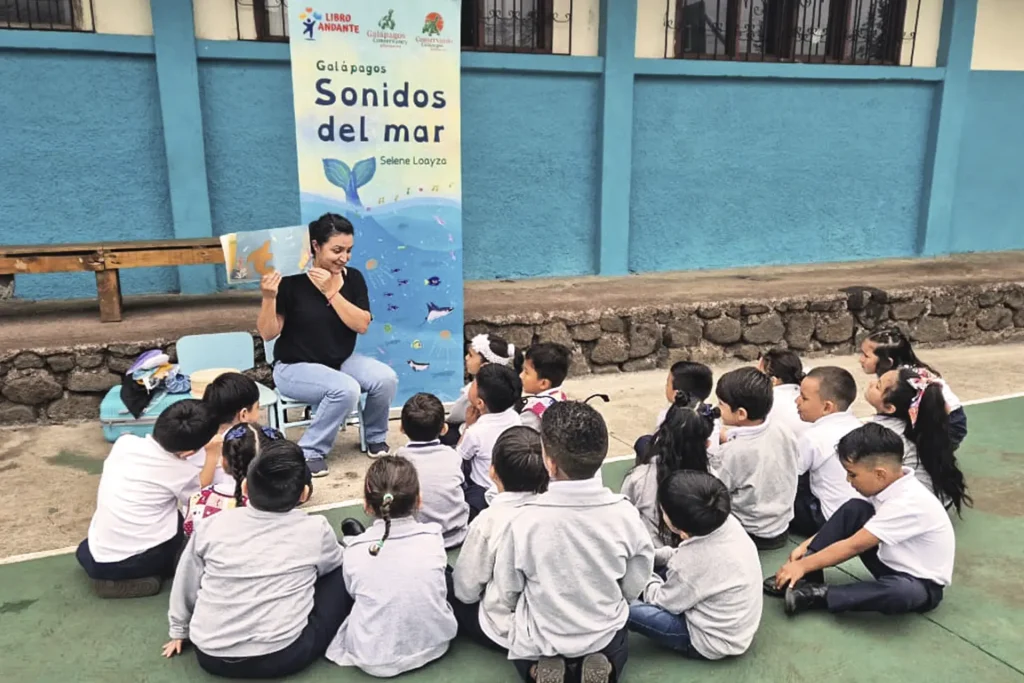
Photo: ©Selene Loaiza
A team of 10 experts including scientists from Galapagos Conservancy, and park rangers with the Galapagos National Park Directorate embarked this week on a 7-day expedition to Santa Fe Island. The team was led by Washington Tapia our General Director. They were on a mission to monitor ecological restoration efforts in Santa Fe Island.
The Galapagos Initiative is a carefully planned, joint conservation program run by Galapagos Conservancy, through its operational arm Conservando Galapagos and the Galapagos National Park Directorate. This initiative is aimed at implementing strategic conservation actions in order to recover ecologically important species and their habitats.
After a journey of 20 miles by land and sea from Santa Cruz Island, the team reached their destination. After reaching Santa Fe they had to transport equipment, water and supplies over two miles of rocky terrain in order to set up the base camp. This complex logistical endeavor underscores our commitment to monitoring and restoring the biodiversity of Santa Fe.
The team, which was composed of five groups with different specialties, completed a wide range of tasks on their trip. The team focused on monitoring the progress of the giant turtles introduced to the island, and assessing plots for vegetation recovery. The team also searched for nests of tortoises to determine whether the tortoises had begun breeding, and they examined the dispersal patterns of land iguanas and tortoises across the island. A drone was used to capture imagery for a long-term assessment of the vegetation in the area.
Dr. Jorge Carrion is our Director of Conservation and he highlights the importance of the data collected during this expedition in evaluating the changes in the iguana population in recent years as a result of the tortoise’s introduction. The expedition will also include the search for bone fragments of tortoises, iguanas and other species for isotopic analyses. This will give valuable insight into the interactions between the two species, especially how much they overlap in their diets,” said Dr. Carrion.
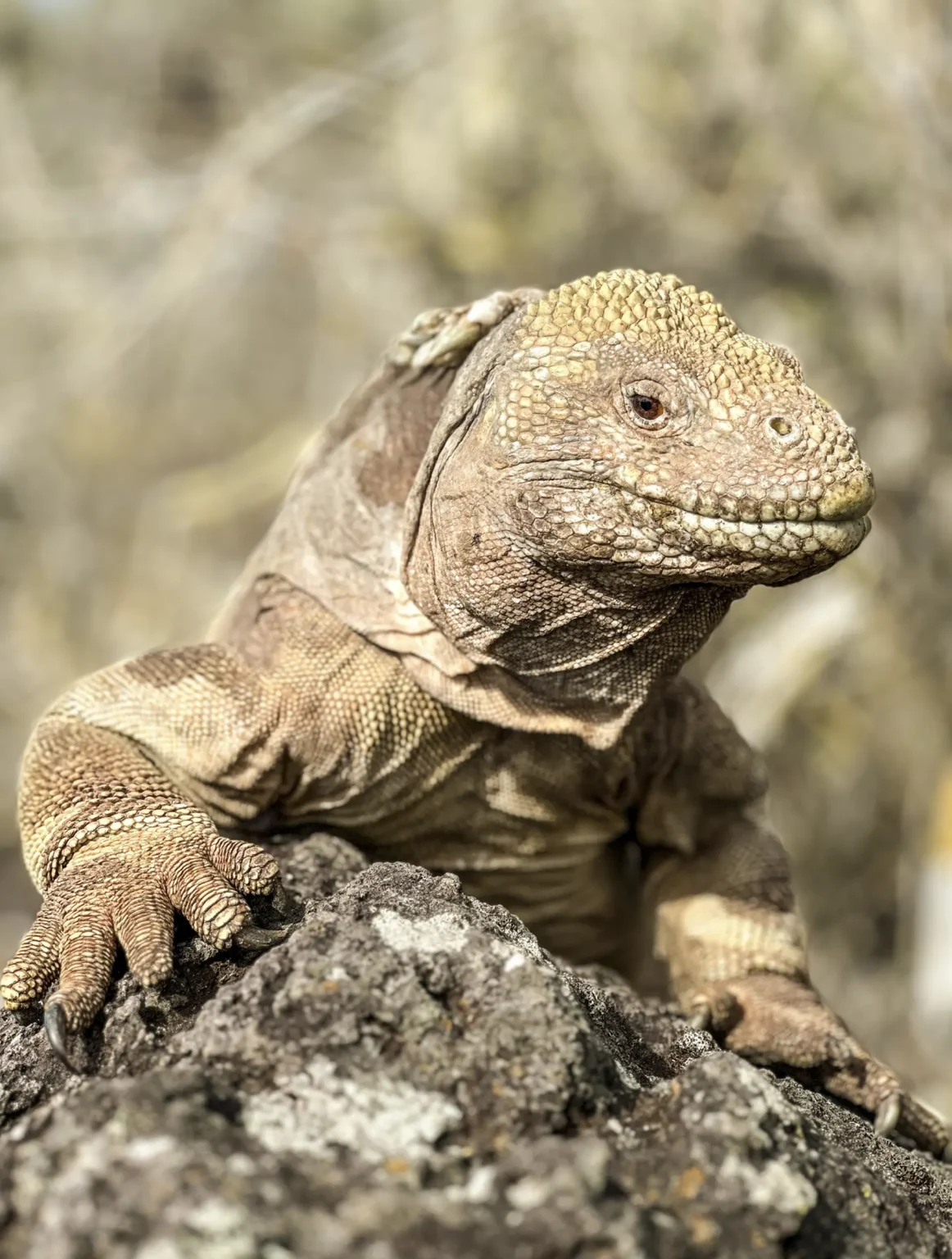
We are eagerly awaiting the results of the expedition which will provide valuable insight into the conservation and restoration Santa Fe Island’s biodiversity. The ongoing support from individuals who are committed to the conservation and restoration of Galapagos is what makes this effort possible. Their generous donations make these essential conservation activities possible.
Adaptation
This adaptation is due to the Galapagos Islands, where there are no predators, and the birds have plenty of food. They can thrive without being able to fly. It is a diving bird that eats mainly coastal fish, octopuses and squids. It is very active and can be seen gathering on the rocks of the seashore to dry off after a long day of hunting.
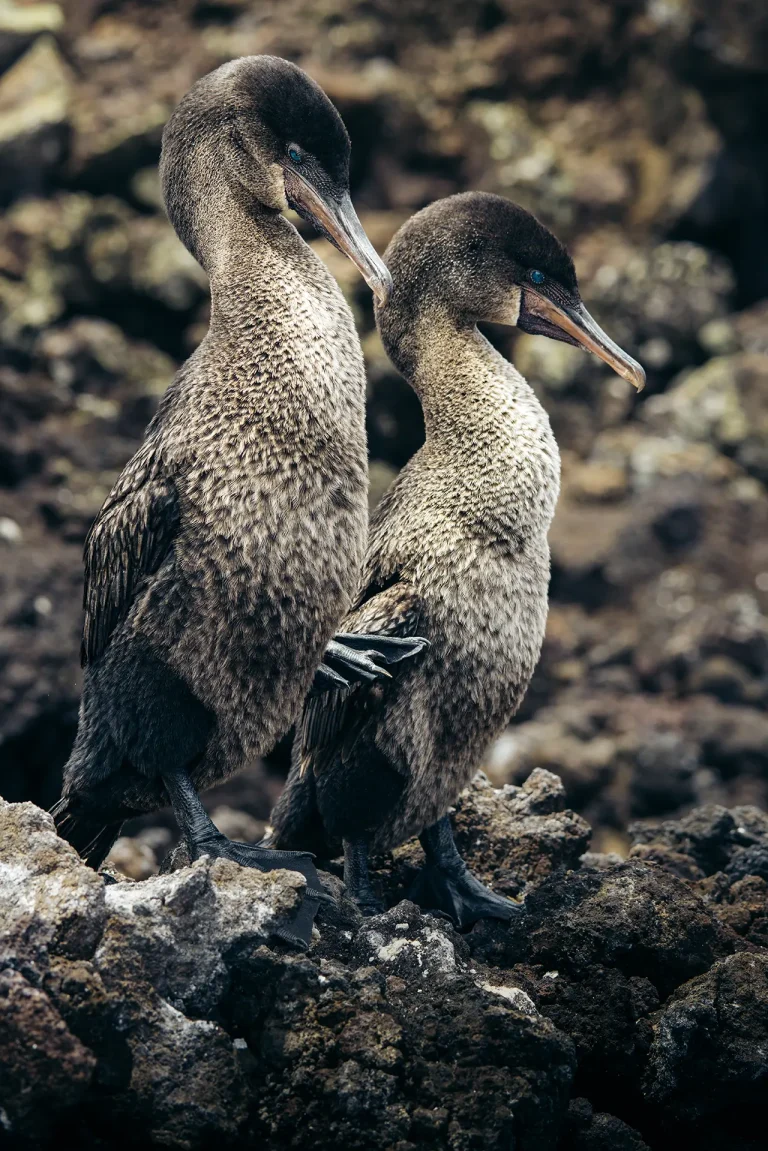
Photo: ©Galapagos Conservancy
Reproductive Dynamics and Parental Behavior
Nesting occurs in the Archipelago during the cooler months of July and October. There are plenty of marine foods available during this period. The female usually lays three to four eggs in a clutch. However, only one chick is able to survive. Both male and female parents incubate the eggs alternately and share the responsibility of feeding and caring for the chicks. When the chicks are able to take care of themselves, the female will leave to find another mate while the male takes care of the remaining chicks. Females can reproduce up to three times per year.
Conservation Status and Survival Challenges
In 2022, the Directorate of Galapagos Park estimated that there were only 2,085 flightless Cormorants. This species is vulnerable to extinction because of the potential threats posed by predators like snakes, owls hawks rats cats and sharks. Experts estimate that flightless cormorants live an average of 13 years. However, some may live longer in favorable conditions with fewer threats.
Galapagos Conservation understands the importance of protecting seabirds including the iconic Galapagos Flightless Cormorant. The presence of Galapagos flightless cormorants can be a good indicator of the health of the ocean. The study of the population dynamics provides insight into how oceans react to environmental and anthropogenic impacts. This highlights the importance of flightless Cormorants in marine ecosystem conservation.
The health of the Galapagos’ marine environment is closely linked to the flightless cormorants, despite their relatively small numbers. It is vital to protect these birds in order to maintain the balance of their habitats. Assuring their survival helps support broader conservation efforts, and sustains the incredible biodiversity of the Galapagos Archipelago. We can contribute to the health of this ecosystem by focusing on flightless cormorants.
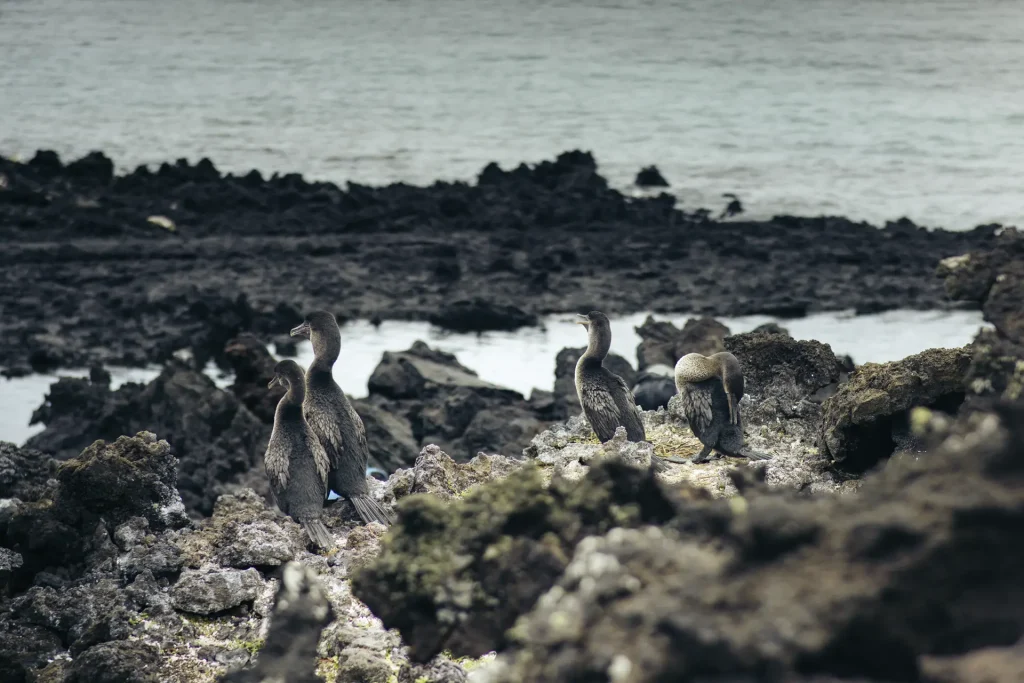
Photo: ©Galapagos Conservancy
Mangroves are of global importance
Mangroves grow along tropical or subtropical coasts. They grow in muddy soil and salty water, forming dense forest with roots that are adapted to tide changes. The mangrove ecosystems are vital to the marine-coastal biodiversity. The mangroves also play a vital role in coastal protection, stabilizing the shores and reducing erosion. They also act as natural barriers to coastal flooding.
Galapagos Mangroves
Galapagos has four distinct species of mangrove: the red mangrove (also known as black mangrove), white mangrove (also called button mangrove), and black mangrove. Each species has its own adaptations. The white mangrove, for example, has roots called pneumatophores that extend upwards from the soil and allow the mangroves to breathe oxygen even when the soil is waterlogged. These characteristics are essential not only for the survival and growth of these trees, but also in the marine environment.
The Galapagos archipelago is home to a variety of marine species that are essential for their complete life cycle. These include pelicans and frigatebirds as well as sea turtles and sea lions. They also provide habitats for reef fish species such as snapper and bacalao, which is a type cod.
Charles Darwin Foundation has recently released a study that highlights the importance of mangroves to the Galapagos archipelago in terms of their ecological and socioeconomic value. The study found that only 5% mangroves in Galapagos were fully protected against extractive activities by the Marine Reserve Zone established in 2001.
Commitment to conservation
On International Mangrove Protection Day today, we would like to highlight the importance of protecting these ecosystems, as they are a vital component of global environmental health. We can ensure that the mangroves in Galapagos, and other places, will continue to provide their valuable environmental services by working together and implementing effective conservation policies.
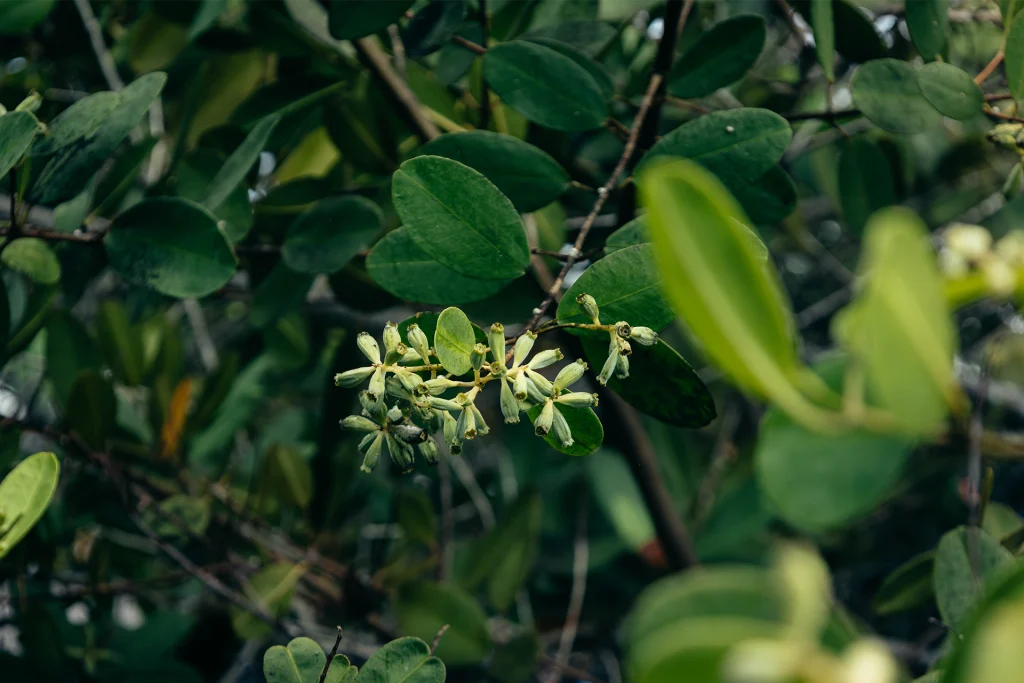
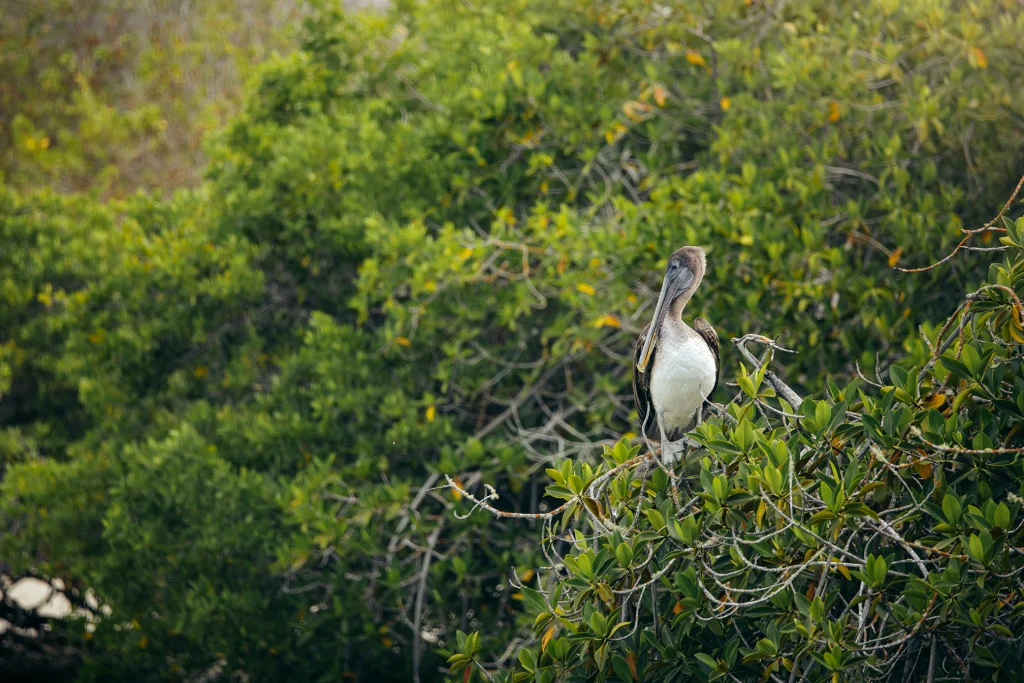
Shark Diversity
At least 35 shark species live in the Galapagos Marine Reserve, including the hammerhead, Galapagos, blacktip, whitetip, and whale sharks. This amazing diversity highlights the importance of Galapagos marine ecosystems, and the urgent need to protect the sharks in this unique region.
Challenges and threats
Sharks are the top predators of marine food webs. Sharks are under serious threat from pollution, climate change and illegal fishing. Sharks are important for maintaining the health of our oceans. It is vital to implement effective conservation measures.
The scalloped Hammerhead ( Sphyrna Lewini) is one of the most vulnerable species in the Galapagos Marine Reserve. Its population has decreased by more than 80% over the past 75 years. This statistic shows the urgency of taking action to save this species. The Galapagos Marine Reserve discovered the first scalloped-hammerhead nursery only in 2017.
Research and Conservation
Since 2021, Galapagos Conservancy funds a vital research project under the direction of park ranger Eduardo Espinoza. This project is designed to examine the complex behaviors, migrations, and habitats used by key shark species for reproduction and feeding in Galapagos water. Data collected is not only essential to our scientific understanding but also for the design and implementation of effective conservation strategies. Espinoza stresses that “understanding the fundamental aspects of these species is essential for developing conservation strategies that protect these impressive predators and also contribute to the maintenance of the overall health the marine ecosystem.”
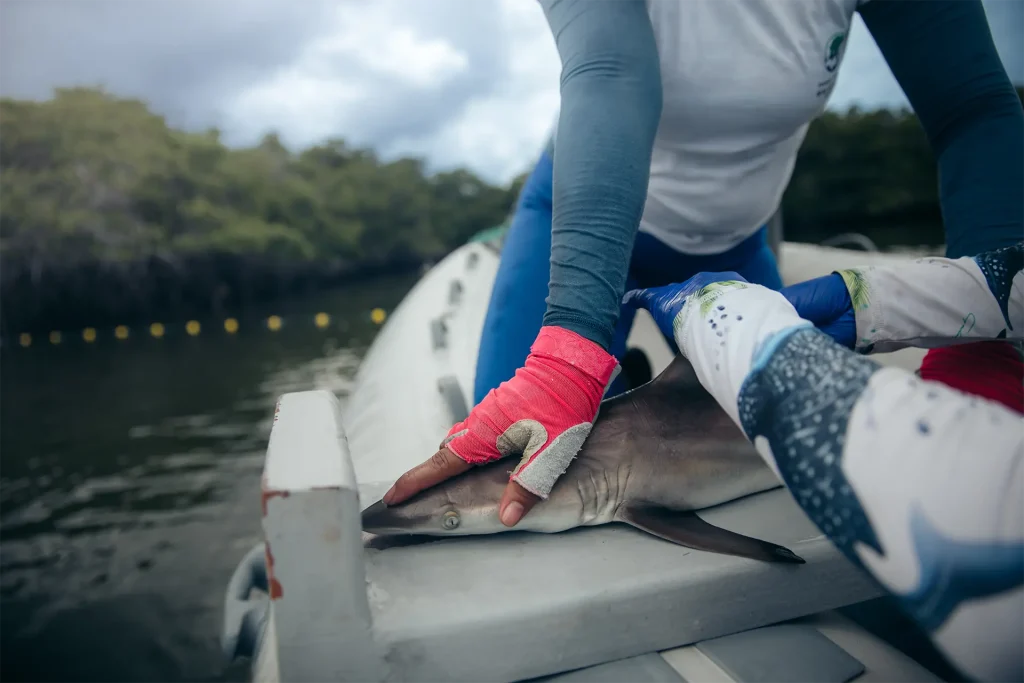
Photo: ©Galapagos Conservancy
Economic and social impact
Sharks are a vital part of the Galapagos Archipelago’s marine ecosystem, and they also play an important role in the local economy. Shark sightings are a major part of the marine tourism industry in the region, which makes up a large portion of its economy. Visitors from all over the world come to see these amazing marine creatures and swim with them in their habitat. Sharks enrich the tourism experience and provide employment for locals.
Marine Conservation Commitment
Our general director, Dr. Washington Tapia emphasizes Galapagos Conservancy’s deep commitment to participating actively in joint efforts to promote harmony between humans and sharks. Dr. Tapia said, “We aim to secure a resilient future of these iconic species by “…advocating the implementation of policies that will ensure their effective protection and promote long-term conservation.”
The generous contributions from many individuals have made our involvement in protecting Galapagos Sharks possible, and reflect our unwavering commitment to marine conservation. We all contribute to the health of Galapagos sharks, and the marine ecosystems that they inhabit, by funding conservation and studies.
Sharks in the Archipelago: An inspiring story that shows how collaboration can help protect our marine life.
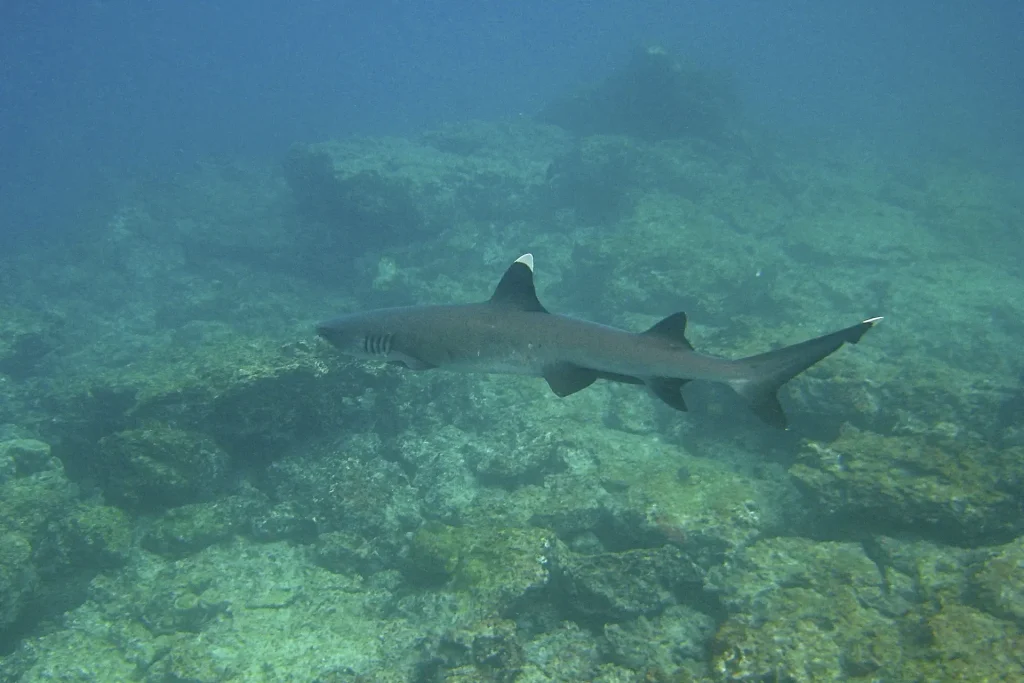
Photo: ©Bob Hoffman